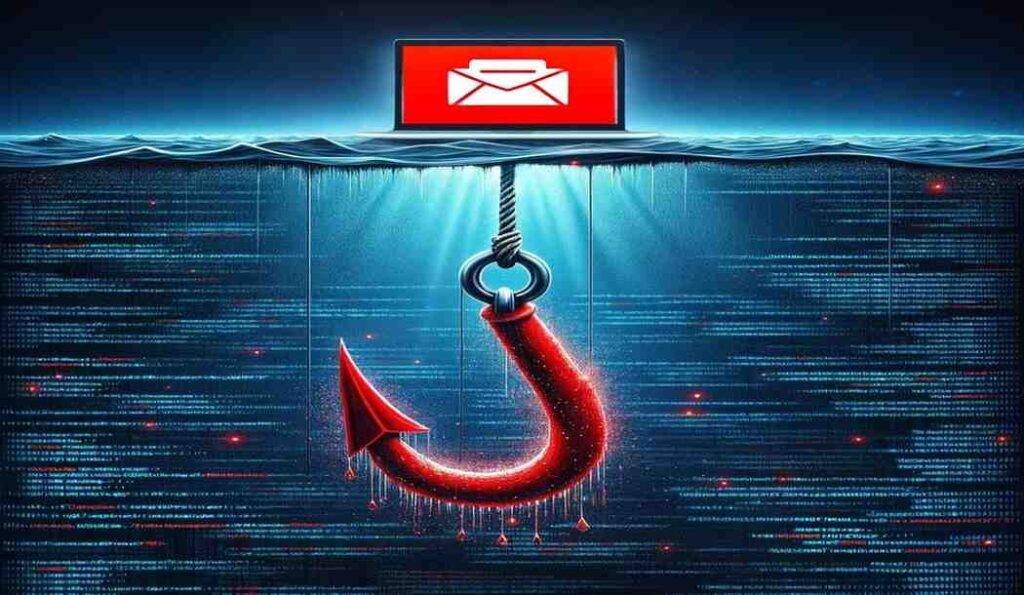Type of Phishing Attack

What is a Phishing Attack?
Scam artists use a trick called phishing. They act like they’re real groups when they chat on the net, trying to trick folks into giving away private stuff like passwords, card details, bank info, or other secrets. Most of the time, they use emails for phishing, but it can be through calls (vishing), texts (smishing), or on places like Facebook or Twitter.
The usual way they do it is by sending a fake message, hoping to fool the person who gets it into thinking it’s real. This can involve copying the style and text of emails from respectable companies, such books or well-known websites. The message may ask the recipient to click on a dangerous link, which could cause malware to be installed, cause a ransomware assault to freeze the computer, or take the user to a phoney website that resembles the real one almost exactly! Users may be tricked into providing personal information on the fraudulent website, which the attackers can then use against them.
Phishing cheats use social engineering tactics to achieve their deceitful objectives by taking advantage of people’s trust and habits. Scam emails are all over because they work well, causing big money loss and private info breaks.
Evolution of Phishing
From the first known occurrences in the mid-1990s, when hackers targeted AOL users with misleading messages in an attempt to coerce them into divulging their passwords, phishing assaults have come a long way. These attacks were initially rather simple, using mass, generic messages to cast a wide net and capture as many targets as possible. Attackers improved their strategies as technology developed and users grew more . By the early 2000s, scam emails had become a big scare for both shoppers and companies, leading to better junk mail blocks and more people knowing about the risk.
In order to get beyond security measures, phishing techniques have evolved into extremely complex ones that combine social engineering, customisation, and cutting-edge technology. Today’s scam emails often use made-to-fit tricks, like spear phishing, where they pick out and study certain folks or groups to send messages that fit just for them. Scammers make folks feel they must act fast by talking about hot work stuff or news. The rise of social sites and phones gives scammers new ways to try tricks, so staying sharp with the latest safety skills and tools is key to beat scammers.
Common Types of Phishing Attack
Reports of phishing attacks come in various shapes, all made to exploit specific weaknesses or scenarios. Here are some of a most common types:
Email Phishing
The mostly seen form of fishermen is electronic phishing, wherein thugs transmit faux emails that seemly from credible sources in a try to dupe recipients into sharing personal info or tapping on unsafe links. These emails oftentimes hold appealing or pressing commands aimed at drawing out a swift reaction. The broad spread and budget-friendly scheme of email phishing, seeking to snag as many victims as feasible, ascertain its efficacy. False invoices, menacing safety alarms, and counterfeit corporate communique are instances of ordinary tactics. They are all tailored to seem as genuine as conceivable to sidestep users’ original doubts.
Spear Phishing
Spear phishing is dishonest than batch email phishing. It aims at certain people, always organisations with extremely tailored communications. To make messages convincing, attackers take time to investigate their targets, getting personal data from social media, trade websites, and few sources. Because of its personalised nature, this kind of attack often goes past conventional protections like spam filters and anti-virus software, turning it deadly. Corporate espionage and infiltration of organisations are usual uses for spear phishing.
Whaling
Whaling attacks specifically targeting senior executives or important individuals within organisations! These high-stakes assaults are designed to trick executives into making unauthorised financial transactions and disclose confidential briefing. The whaling emails content is usually crafted to mime senior-level conversations, often engaging legal or financial things needing immediate attention, making them less obvious and more probable to succeed.
Smishing and Vishing
Vishing, or voice phishing, be smishing, good SMS phishing, is a technique to deceive victims through phone conversations, and text messaging. The act of sending text messages that deceive recipients into visiting risky websites or divulging personal information is known as “smishing”. Scam calls act like they’re from groups such as banks or tax offices, pushing people to share key info over the call. Both types employ the proximity and speed of phone conversations for forcing their subjects to take immediate action.
Angler Phishing
A new kind of scam, known as “angler phishing,” uses chats on social media to trick folks. Attackers who look like they give help to users chatting or asking questions on these networks are really up to no good. They seem nice, gaining trust from folk, and then they lead them to tap on risky links or give out private info, thinking it will solve their issues. This method is extra sneaky because it uses the usual way social sites help customers and the trust we have in them to let the fraud happen.
The Impact of Phishing
Phishing hits can hurt much more than just causing small troubles. They put people’s safety, company trust, and country’s security at risk. Money-wise, the harm is huge. Every year, people lose a lot of money together—billions of dollars. For one person, falling for such a trick may lead to someone else buying things with their money, money being taken, or someone stealing their personal details. Fixing this can take a long, long time. Companies also lose money straight away from fake deals. They spend a lot more to make their security strong again after an attack. Plus, they could have to pay big penalties if private data gets out.
Phishing hits can do more than just make you lose money right away. They can break the trust you need for online buying and talking. If shoppers get tricked by fake emails acting like a brand, they might stop trusting that brand. This can mean less business and a damaged good name. Losing trust can hurt how a company grows and keeps its customers for a long time. Big groups, mainly ones in key areas, can be hit by phishing. It can let out secret or private info. This can harm how they stand against others and make weak spots in their plans.
In a wider view, the skills and methods made by ways of fishing add to a risky web threat space. Other web crimes like spreading viruses, breaking into systems, and spying often come from mean attacks. The info obtained by these assaults can be employed for a variety of unlawful activities, from the formation of more competent fishing campaigns to state-of-the-art focused assaults against administrations or essential networks. Fighting fish is basically important for all the security and duration of the international digital framework besides being a way to protect individual or business belongings.
Defensive Strategies Against Phishing
Education and Awareness
The first guard against scams is knowing about them. Often teaching workers can cut down on the chance of these tricks working well. These teaching times should not just show workers the usual hints of scams but also tell them of the new scam tactics. Fake scam tests can be a good hands-on way to help workers spot scam tries.
Use of Technology
Set up email trap systems to catch trick emails before they hit the inbox. Junk filters, virus shields, and web filtering are so important to block these big threats. For a stronger shield, groups can use tools that check where a message comes from and make sure the sender is who they say they are, to stop email scams.
Multi-factor Authentication (MFA)
Multi-factor Authentication (MFA) Use more than one proof steps (MFA) are one of the top ways to reduce harm from fake log-in tricks. MFA puts in an extra wall of safety by asking for more than one proof of who you are. So, if the false login trap does get the sign-in details, the extra check step can stop someone who shouldn’t get in.
Phishing Reporting Mechanisms
Setting up a simple plan for telling about fishing tries helps in quickly lessening risks and making the whole safety plan work better. If workers know when and how to flag strange emails, the data safety team can act fast to deal with threats and might stop more attacks from happening.
By using these safety steps, folks and teams can really cut down the chance of phishing attacks and get better at protecting themselves online.
Conclusion
To sum up, phishing assaults continue to be one of the most widespread and destructive hazards in the cyber world, affecting people, companies, and governments everywhere. These lying moves break trust in online talks by breaking the safety of private info and leading to big money loss. As trick scams get smarter, we all must know the risks and stay sharp. We need to mix smart safety steps like using many ways to check who you are and keeping our programs new, with strong tech guards, and learning to fight off these sneaky tricks. The tricky threats need reduction for secure online chit-chats. Installing strong shields and educate folks is important to stay safe online.
FAQs
Email phishing, it remains the biggest.
Phishing emails can often be seen with very urgent or panic language, mixed-up URLs (where the hyperlink text doesn’t match the URL you go to), bad grammar, and asking for sensitive information. Fake addresses could also seem oddly different from the real domain of the organisation.
Phishing is happening not just on email but on phone calls (vishing), text messages (smishing), and on social media platforms (angler phishing) too! All these ways use tricks and lies to fool people into giving up personal info.
Strong, bossy spices are needed for various accounts, enable multi-factor ridiculousness where reachable, upgrade your software irregularly, and amuse yourself with the nastiest phishing classics. Apart from that, use detailed protection software that involves email and web prevention.
Change your passwords right away if you think maybe they were hacked. Inform your bank and credit card givers, and watch your accounts for any illegal activities. Let the proper authorities know about the issue, like the FTC (Federal Trade Commission) in the USA, for more assistance and to avoid upcoming attacks.
